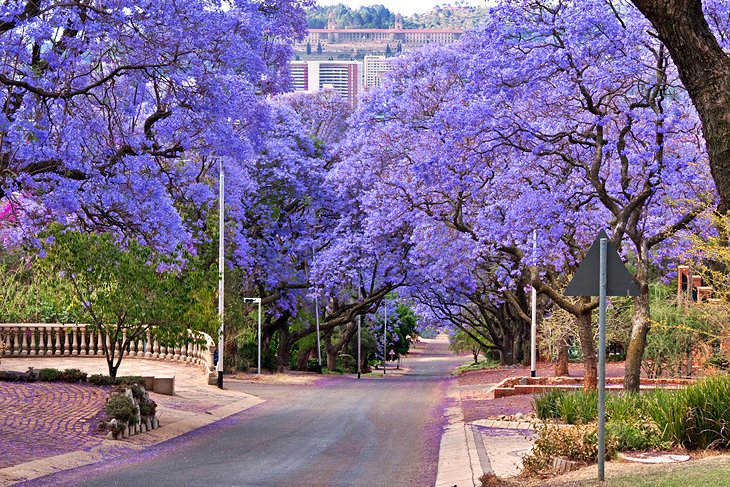Fascination About Johannesburg North Attractions
Fascination About Johannesburg North Attractions
Blog Article
3 Simple Techniques For Johannesburg North Attractions
Table of ContentsNot known Facts About Johannesburg North AttractionsSome Known Facts About Johannesburg North Attractions.An Unbiased View of Johannesburg North AttractionsThe Buzz on Johannesburg North AttractionsEverything about Johannesburg North AttractionsSome Known Factual Statements About Johannesburg North Attractions
The city grew on the edge of the Witwatersrand Key Coral reef, a below ground stratum of gold-bearing quartz-silica conglomerate that arcs for hundreds of miles underneath the Highveld - Johannesburg North attractions. Most of the gold mines in the city ceased operation in the 1970s, yet in its day the Witwatersrand gold sector accounted for even more than 40 percent of the world's annual gold production.Johannesburg has a warm environment. Summer season temperatures average regarding 75 F (24 C); winter months temperature levels average about 55 F (13 C) and just periodically dip below freezing. The city enjoys concerning 8 hours of sunlight each day in both wintertime and summer. Rainfall averages about 28 inches (700 millimetres) per annum, however the overall varies significantly from year to year.
What rainfall the city obtains drops almost exclusively in the summertime, commonly in incredible late-afternoon electrical tornados. Air air pollution poses a significant trouble, particularly in the cold weather, when thermal inversions hinder the westward flow of air from the Indian Ocean. Air pollution is most extreme in the largely worked out Black territories on the city's periphery, where many locals still rely on coal for fuel.

Little Known Facts About Johannesburg North Attractions.
The equilibrium of the city is occupied by whites. Lodging varies in personality and top quality.
Physical development, although rather limited by transportation, proceeded promptly as migration to South Africa, and Johannesburg specifically, raised dramatically. This issue was addressed in the 1930s when the automobile was introduced in mass manufacturing to South Africa. Autos were, generally, restricted to the affluent, and permitted them to relocate to the north of the city and commute into the centre.
Many inadequate suburban areas were combined, with poor blacks and whites living together, although the rich suburbs were generally booked for whites.
The estimated population of the region is 200,000, [] The number of people living in the inner city on a casual basis is unidentified, as numerous are prohibited immigrants. Most higher-income homeowners and white people have relocated to the northern suburbs and have actually been replaced by lower-income black people. The unemployment, education, and age profiles of the location are all unknown, due to the trouble of obtaining trustworthy information about the area.
Some Of Johannesburg North Attractions
Yeoville and Bellevue have a mix of home buildings and single property units from this source on tiny great deals. The area is located on a mountainous divide that runs from east to west.

Johannesburg Arena, a training ground for both the Golden Lions and Orlando Pirates, is nearby. The eastern residential areas of Johannesburg lie in the city's 7th [] and 9th [] regions. The area is likewise functionally integrated with East Rand boundary towns outside of the main limit of Johannesburg, such as Bedfordview and Edenvale (both component of Ekurhuleni Metropolitan District).
Johannesburg North Attractions - Questions
R. Tambo International Flight Terminal). The eastern suburbs are some of the oldest areas of Johannesburg, there are huge neighborhoods of Jewish and other European backgrounds, the bulk of the population is English speaking. There are 3 golf links in addition to a variety of safeguarded ridges with viewsites. There are several strong and up-market home entertainment and buying areas in the east such as the Eastgate Shopping Center and the Greenstone shopping center.
Originally built to house male migrant workers, lots of have been improved as homes for couples and families. The residential area was not historically permitted to produce work centres within the area, so virtually all of its homeowners are travelers to various other parts of the city.
Johannesburg North Attractions - Questions
The N1 Western Bypass connects the northern suburbs with the north-western residential areas. The houses in the north suburban areas are mostly official, with no significant areas of casual real estate, or real estate that lacks a permanent structure. Although this is a well-known location, there is a fad of land usage modification from property to business, especially along primary arterial roadways and around well-known nodes.
Roads to the east and west are less well established, as there are no highways travelling in that direction. In the direction of the north boundary of the city, the thickness of development decreases, leaving big locations of undeveloped land around Midrand.
Some Known Facts About Johannesburg North Attractions.
The first suburb to the north of the inner city is Parktown, which lies on a hillside neglecting the central city and Hillbrow. It has lots of affluent locals and read the article Edwardian-style manors, check my blog as well as the Education and Medical campuses of the College of the Witwatersrand. The big concrete Charlotte Maxeke Johannesburg Academic Healthcare Facility controls the horizon of Parktown.
Report this page